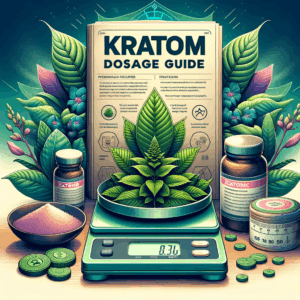
Kratom Safety Tips: Must-Have Advice for Safe Use
- Understanding Kratom
- What is Kratom?
- Why Safety Matters
- Research Your Source
- Signs of a Reliable Vendor
- Start with Low Doses
- Don’t Rush to Increase Doses
- Understand Your Body
- Avoid Combining with Other Substances
- Safe Practices
- Stay Hydrated
- Take Breaks
- Monitor Your Mental State
- Signs of Mental Distress
- Educate Yourself on Legislation
- Consult Healthcare Professionals
- Listen to Your Body
- FAQs
- Conclusion
- References
Understanding Kratom

Kratom, a tropical tree native to Southeast Asia, has gained popularity in recent years. Its leaves contain compounds that can have psychoactive effects. Traditionally, people have used kratom for pain relief, energy, and mood enhancement. However, safety concerns and potential side effects have arisen alongside its growing use.
If you’re considering using kratom, understanding its effects, benefits, and risks is crucial. This guide lays out essential safety tips for safe kratom use while highlighting the importance of informed choices.
What is Kratom?
Kratom (Mitragyna speciosa) belongs to the Rubiaceae family, which also includes coffee. People typically consume kratom leaves by chewing them, brewing them into tea, or using extracts in capsules or powders. The active compounds in kratom are mainly mitragynine and 7-hydroxymitragynine. These compounds interact with the opioid receptors in the brain, which can lead to both stimulating and sedating effects.
Its effects can differ based on the strain and dosage. Typically, low doses are energizing, while higher doses tend to be more sedative. Users often report relief from chronic pain, increased energy, and improved mood. Despite these benefits, there are important safety considerations to keep in mind.
Why Safety Matters
Kratom is not FDA-approved, and its safety profile remains uncertain. Some users report adverse effects, such as nausea, dizziness, or constipation. Additionally, serious side effects can occur, including seizures, liver damage, and dependence.
Due to these risks, prioritizing safety is essential. Understanding how to use kratom responsibly will help mitigate potential dangers. Keep reading as we explore critical safety tips for using kratom.
Research Your Source
When using kratom, the quality of the product matters immensely. It’s vital to research and find reputable vendors. Look for vendors who provide lab test results and other certifications. High-quality kratom should be free from contaminants, such as heavy metals and other harmful substances.
Here are some tips for selecting a reliable vendor:
– Check online reviews or testimonials from other customers.
– Look for companies that conduct third-party lab testing.
– Confirm whether they offer a money-back guarantee or return policy.
Signs of a Reliable Vendor
| Criteria | Yes | No |
|————————-|—————-|—————–|
| Transparent lab testing | ✔️ | ❌ |
| Positive reviews | ✔️ | ❌ |
| Clear return policy | ✔️ | ❌ |
Prioritizing quality ensures you receive a safe and effective product.
Start with Low Doses
If you’re new to kratom, begin with a low dose. Starting small helps you gauge its effects and ensures you don’t overwhelm your body. Low doses typically range between 1-3 grams for beginners. From there, you can gradually increase the dose as needed.
A common approach involves taking kratom once a day to understand its impact. Monitor your body’s response and adjust your dosage accordingly. Remember, everyone’s body is different, and what works for one person may not work for another.
Don’t Rush to Increase Doses
Increasing your dose too quickly can lead to unwanted side effects. Common side effects can include:
– Nausea
– Dizziness
– Constipation
If you experience these symptoms, it’s wise to lower your dosage or take a break from use. Safety first!
Understand Your Body
Your body’s chemistry plays a significant role in how kratom affects you. Several factors can influence its impact:
– Weight: Heavier individuals may require higher doses to feel effects.
– Metabolism: A faster metabolism might require more frequent doses.
– Age and Sex: Hormonal differences and age can affect body responses.
Always pay attention to how you feel. Keep a journal of your experiences to understand your dosage needs better. This habit can help you adjust your intake accordingly.
Avoid Combining with Other Substances
Combining kratom with other substances, including alcohol or medications, can pose serious risks. These combinations may amplify the effects and increase the chance of side effects.
For example, mixing kratom with prescription painkillers can dangerously increase sedation. Instead of finding relief, you might encounter harmful interactions. Always consult your healthcare provider before mixing kratom with other substances.
Safe Practices
– Always use kratom alone, especially when you’re starting.
– Monitor your body’s reaction before considering any combinations.
Stay Hydrated
Hydration is essential when using kratom. Dehydration can worsen some of the common side effects, such as constipation or headaches. Drinking enough water throughout the day can help alleviate these effects.
A good rule of thumb is to aim for at least eight glasses of water daily. If you’re consuming kratom, consider slightly increasing your water intake. Proper hydration promotes overall well-being and helps keep your body functioning optimally.
Take Breaks
Regular use of kratom can lead to tolerance, meaning you may need higher doses to achieve the same effect. To prevent this, it’s helpful to take breaks. Consider a ‘cycle’ approach:
– Use kratom for a week or two.
– Follow with a break of at least one week.
This allows your body to reset and reduces the risk of dependency. Listen to your body and adjust your usage accordingly.
Monitor Your Mental State
Kratom can affect your mental well-being. While many find it enhances mood, others might experience anxiety or depression. Always remain aware of how kratom impacts your mood and emotions.
If you notice negative changes, reevaluate your usage. It’s wise to discuss any concerning changes with a healthcare professional. Mental health is just as crucial as physical health, and finding a balance is key.
Signs of Mental Distress
– Increased anxiety or paranoia
– Sudden mood swings
– Withdrawal symptoms
If you experience any of these symptoms, consulting a healthcare provider is crucial.
Educate Yourself on Legislation
Kratom’s legal status varies around the world and even at the state level in the U.S. Some areas have banned its use, while others allow it. Stay informed about the legislation in your region to avoid legal troubles.
You can check local resources or online databases to understand the legal landscape regarding kratom. Being informed helps you remain compliant, ensuring your kratom experience stays positive.
Consult Healthcare Professionals
Before starting kratom, it’s wise to consult with a healthcare professional. They can provide valuable insights tailored to your personal health needs. This is particularly important if you have existing medical conditions or take medications that may interact with kratom.
A healthcare provider can offer personalized recommendations based on your health profile. Don’t hesitate to ask questions and seek guidance before incorporating kratom into your routine.
Listen to Your Body
Your body knows best. Always pay attention to how you feel after taking kratom. If something feels off, it’s essential to trust your instincts. Stop using kratom if you experience negative effects and seek medical advice if needed.
Self-awareness is crucial. Keep a journal of your experiences, noting your feelings and any side effects. Over time, this will help you make more informed decisions about your kratom use.
FAQs
1. What is kratom?
Kratom is a tropical tree whose leaves contain compounds that have psychoactive effects, used for pain relief and mood enhancement.
2. Is kratom safe?
While some find it beneficial, kratom has potential side effects and isn’t FDA-approved. Caution and research are crucial for safe use.
3. How should I start taking kratom?
Begin with a low dose of 1-3 grams and monitor your body’s response before increasing.
4. Can I combine kratom with other substances?
It’s best to avoid combining kratom with other substances, as it can lead to dangerous interactions.
5. How can I tell if I’m using high-quality kratom?
Check for vendor transparency, lab testing, and positive customer reviews to ensure product quality.
6. What are the common side effects of kratom?
Common side effects include nausea, dizziness, and constipation. Serious effects can include seizures or liver damage.
7. Should I consult a doctor before using kratom?
Yes, consulting a healthcare professional is crucial, especially if you have existing health conditions or take medications.
8. How can I stay hydrated while using kratom?
Aim for at least eight glasses of water a day, increasing water intake if using kratom.
9. Is kratom legal everywhere?
No, kratom’s legal status varies by location. Always stay informed about local laws.
10. How long should I take a break from kratom?
Taking breaks of at least a week after continuous use can help reduce tolerance and prevent dependence.
Conclusion
Kratom offers potential benefits, but safety should always be a top priority. By adhering to these safety tips—researching your source, starting slow, staying hydrated, and consulting professionals—you can make informed decisions. Each individual’s experience with kratom is unique. Therefore, understanding your body and its reactions will help you navigate your kratom journey more safely and effectively.
References
1. National Institute on Drug Abuse. (2021). Kratom. NIDA
2. American Kratom Association. (2020). Kratom FAQ. AKA
3. Drug Enforcement Administration. (2022). Drugs of Abuse: Kratom. DEA
4. WebMD. (2023). Kratom: Uses, Side Effects, Interactions. WebMD


